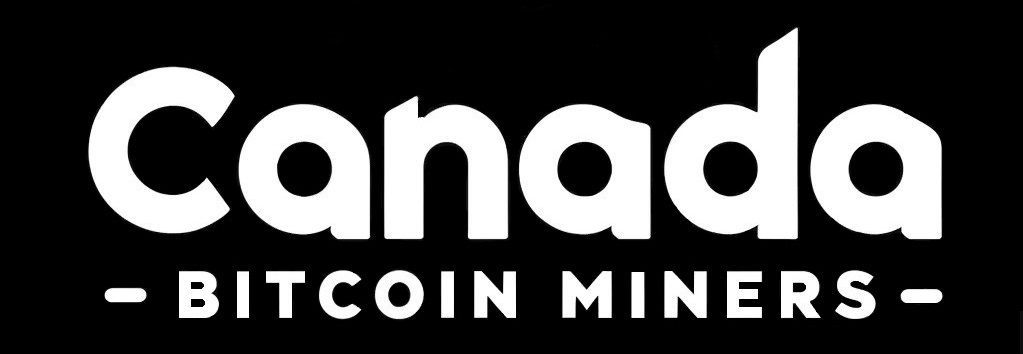Understanding Bitcoin Decentralization
The Comprehensive Guide to Bitcoin Decentralization: Benefits, Challenges, and Future Prospects
Understanding Bitcoin Decentralization
Table of Contents
- Introduction
- What is Decentralization?
- The Importance of Decentralization in Cryptocurrency
- How Bitcoin Achieves Decentralization
- The Role of Blockchain Technology in Decentralization
- Security and Trust in a Decentralized Network
- Decentralized Networks and Peer-to-Peer Systems
- Bitcoin Mining and Decentralization
- Case Studies of Decentralization in Bitcoin
- Benefits of Bitcoin Decentralization
- Challenges and Future of Bitcoin Decentralization
- FAQs
- Conclusion and Exploration
Introduction
With its unique peer-to-peer transaction system, Bitcoin, a pioneering decentralized digital currency, has revolutionized the financial world. At the heart of Bitcoin's success is decentralization, which ensures that no centralized authority controls the entire network. This article explores the intricacies of Bitcoin decentralization, its significance, and how it shapes the cryptocurrency landscape. We will delve into the mechanisms that make Bitcoin a decentralized system, as well as its benefits, challenges, and prospects.
What is Decentralization?
Define the concept of decentralization
A decentralized system is one in which control and decision-making are decentralized from a central authority. In the context of cryptocurrencies, decentralized means that the power to validate and record transactions is distributed among multiple participants rather than controlled by a single entity.
Decentralization Definition in Cryptocurrency
In cryptocurrency, decentralization ensures that no single party can dictate the rules or manipulate the system. This is achieved through a distributed node system that validates transactions and maintains the blockchain ledger, overcoming challenges like the Byzantine Generals Problem.
The Importance of Decentralization in Cryptocurrency
- Security and Trust: By reducing the risk of a single point of failure, decentralization enhances security. The entire network is at risk in a centralized system if the central authority fails. In contrast, a decentralized network like Bitcoin distributes this risk across many nodes, making it more resilient to the Sybil attack.
- Transparency and Immutability: Decentralized systems provide transparency, as all transactions are recorded on a public ledger. Once data is recorded on the blockchain, it cannot be altered, thus fostering user trust.
- Peer-to-Peer Network: Decentralization enables direct transactions between parties without the need for intermediaries. This peer-to-peer network reduces transaction costs and increases efficiency while maintaining pseudonymity.
How Bitcoin Achieves Decentralization
- Bitcoin Protocol and Nodes: The Bitcoin protocol is the rules governing how the Bitcoin network operates. A decentralized network of nodes maintains the network, which consists of individual computers that validate and relay transactions. These nodes work together to ensure the network remains secure and functional, using implicit consensus and block validation techniques.
- Proof of Work: In Bitcoin, transactions are validated and added to the blockchain using a consensus algorithm called Proof of Work (PoW). Miners compete to solve complex mathematical problems to add a block to the blockchain. This process is decentralized, as anyone can participate in mining. Other consensus algorithms, like Paxos, are also used in some decentralized systems.
- Incentives for Decentralization: Bitcoin incentivizes decentralization by rewarding miners with newly created bitcoins and transaction fees. This incentive engineering encourages more participants to join the network, further distributing control.
The Role of Blockchain Technology in Decentralization
- Blockchain Network: A blockchain network records all transactions across a distributed network of nodes. In cryptography, chains are formed by linking blocks chronologically, each containing a list of transactions.
- Immutability and Transparency: The blockchain cannot be altered after a block has been added. This immutability ensures data integrity and transparency, as all transactions are publicly recorded and verifiable.
- Distributed Ledger Technology: Distributed Ledger Technology (DLT) underpins blockchain networks, allowing multiple participants to have synchronized copies of the ledger. This distribution eliminates the need for a central authority and enhances security.
Security and Trust in a Decentralized Network
- Cryptography and Data Integrity: Cryptography is essential for securing transactions and ensuring data integrity in a decentralized network. Public and private keys are used to encrypt and decrypt transaction data, making it nearly impossible for unauthorized parties to alter the information. Randomness is also used in some cryptographic techniques.
- Consensus Algorithms: Various consensus algorithms, such as Proof of Work and Proof of Stake, allow decentralized networks to agree on the state of the blockchain. Using these algorithms, all nodes in the network reach a distributed consensus on transaction validity.
- Resistance to Sybil Attacks: Decentralized networks are designed to resist Sybil attacks, where a single entity creates multiple fake identities to gain control. By requiring significant computational power or stake to participate in the consensus process, Bitcoin mitigates the risk of such attacks.
Decentralized Networks and Peer-to-Peer Systems
- Define Decentralized Network: A decentralized network is one in which control is distributed among multiple participants rather than centralized. Each participant (node) has equal authority in such a network and can validate transactions independently.
- Peer-to-Peer Transactions: In a peer-to-peer system, transactions occur directly between parties without intermediaries. This reduces transaction costs and increases speed, as there is no need for third-party validation, even with issues like network latency.
- Examples of Decentralized Networks: Bitcoin is the most well-known example of a decentralized network. Other examples include Ethereum, which supports decentralized applications (dApps), and Filecoin, a decentralized storage network.
Bitcoin Mining and Decentralization
- Bitcoin Mining Centralization: Bitcoin mining involves using computational power to verify transactions and add them to the blockchain. While mining was initially decentralized, it has become more centralized over time, with mining pools controlling a large portion of the network's hash rate.
- Decentralizing Bitcoin Mining: Efforts are being made to decentralize Bitcoin mining by promoting smaller mining pools and encouraging individual miners. Technologies such as Stratum V2 and BetterHash aim to give individual miners more control over their work.
- Incentives for Decentralized Mining: Bitcoin's incentive structure, which rewards miners with newly created bitcoins and transaction fees, encourages decentralization. By ensuring that mining stays profitable for smaller participants, Bitcoin can maintain a decentralized network.
Case Studies of Decentralization in Bitcoin
- Case Study 1: The Genesis Block: The Genesis Block is the first block of the Bitcoin blockchain. It is mined by Satoshi Nakamoto. It represents the core of the Bitcoin network and showcases its decentralized nature, as it was created without a central authority.
- Case Study 2: The Mt. Gox Incident: The Mt. Gox incident, in which a centralized Bitcoin exchange was hacked, highlighted the importance of decentralization. Users lost their funds due to the exchange's centralized control, underscoring the need for decentralized exchanges and self-custody of funds.
- Case Study 3: The Rise of Decentralized Finance (DeFi): Decentralized Finance (DeFi) platforms built on Ethereum demonstrate the power of decentralization. These platforms provide financial services, like lending and borrowing, without intermediaries. Using smart contracts to automate processes like token generation.
Benefits of Bitcoin Decentralization
- Enhanced Security: Decentralization helps to minimize the risk of a single point of failure. Improving network security. Distributed control ensures that no single entity can manipulate the system.
- Increased Transparency: On a decentralized network, all transactions are recorded in a public ledger. Ensuring transparency. This transparency fosters trust among users and prevents fraud.
- Financial Freedom: Decentralization enables financial freedom by allowing individuals to control their funds without relying on banks or governments. In regions with unstable monetary systems, this is of particular importance.
- Reduced Transaction Costs: By eliminating intermediaries, decentralized networks reduce transaction costs. Peer-to-peer transactions are typically faster and cheaper than those processed by traditional financial institutions.
Challenges and Future of Bitcoin Decentralization
- Scalability Issues: Scalability is one of the primary challenges of decentralization. Transaction processing becomes more difficult as the network grows. Solutions such as the Lightning Network address scalability issues.
- Regulatory Uncertainty: There is uncertainty associated with decentralized networks because they operate outside of traditional regulatory frameworks. It is unclear how governments will regulate decentralized cryptocurrencies, which may impact their adoption and use.
- Technological Advancements: The future of Bitcoin decentralization will depend on technological advancements. Innovations in blockchain technology, consensus algorithms, and mining techniques will shape the evolution of decentralized networks.
- Community and Governance: Decentralized networks rely on the community for governance. Ensuring that all participants have a voice and that decisions are made transparently and somewhat is crucial for the success of decentralized systems.
FAQs
- What is Decentralization?
- Decentralization is the distribution of control and decision-making away from a central authority. In cryptocurrencies, it means that no single entity controls the network.
- How Does Bitcoin Decentralization Work?
- Bitcoin decentralization is achieved through the use of a distributed network of nodes that validate transactions and maintain the blockchain. Consensus algorithms like Proof of Work ensure that all nodes agree on the state of the blockchain.
- What are the Benefits of Decentralization in Cryptocurrency?
- Benefits include enhanced security, increased transparency, financial freedom, and reduced transaction costs. The system's decentralization ensures that no single entity can manipulate it.
- What is the Role of Mining in Bitcoin Decentralization?
- The mining process validates transactions and adds them to the blockchain. It distributes control among miners, ensuring that the network remains decentralized.
- Can Bitcoin Mining Become More Decentralized?
- Yes, efforts are being made to promote smaller mining pools and technologies that give individual miners more control. These efforts aim to counteract the centralization of mining power.
- What are the Challenges of Bitcoin Decentralization?
- Challenges include scalability issues, regulatory uncertainty, and the need for continuous technological advancements. Ensuring fair governance and community participation is also crucial.
- How Does the Lightning Network Help with Decentralization?
- The Lightning Network, a second-layer solution, enhances Bitcoin's scalability and transaction speed. It enables off-chain transactions, reduces congestion on the main blockchain, and supports decentralization.
- What is a Peer-to-Peer Network?
- A peer-to-peer network allows direct transactions between parties without intermediaries. It enhances efficiency and reduces costs by eliminating the need for third-party validation.
- What is Distributed Ledger Technology?
- Distributed Ledger Technology (DLT) is the foundation of blockchain networks. It ensures that all participants have synchronized copies of the ledger, eliminating the need for a central authority.
- What is the Future of Bitcoin Decentralization?
- The future depends on technological advancements, regulatory developments, and community governance. Innovations in blockchain technology and consensus algorithms will shape the evolution of decentralized networks.
Conclusion and Exploration
Bitcoin's decentralization is a cornerstone of its success and resilience. By distributing control and decision-making across a network of nodes, Bitcoin ensures enhanced security, transparency, and financial freedom. As technology evolves, decentralization will continue to shape cryptocurrencies.
Explore Further
Ready to explore the benefits of Bitcoin and contribute to its permission less decentralized network? Visit Canada Bitcoin Miners to discover our range of mining hardware and services. Whether you want to start mining or enhance your existing operations, we have the tools and expertise to help you succeed. Join the decentralized revolution and embrace the future of finance today!



